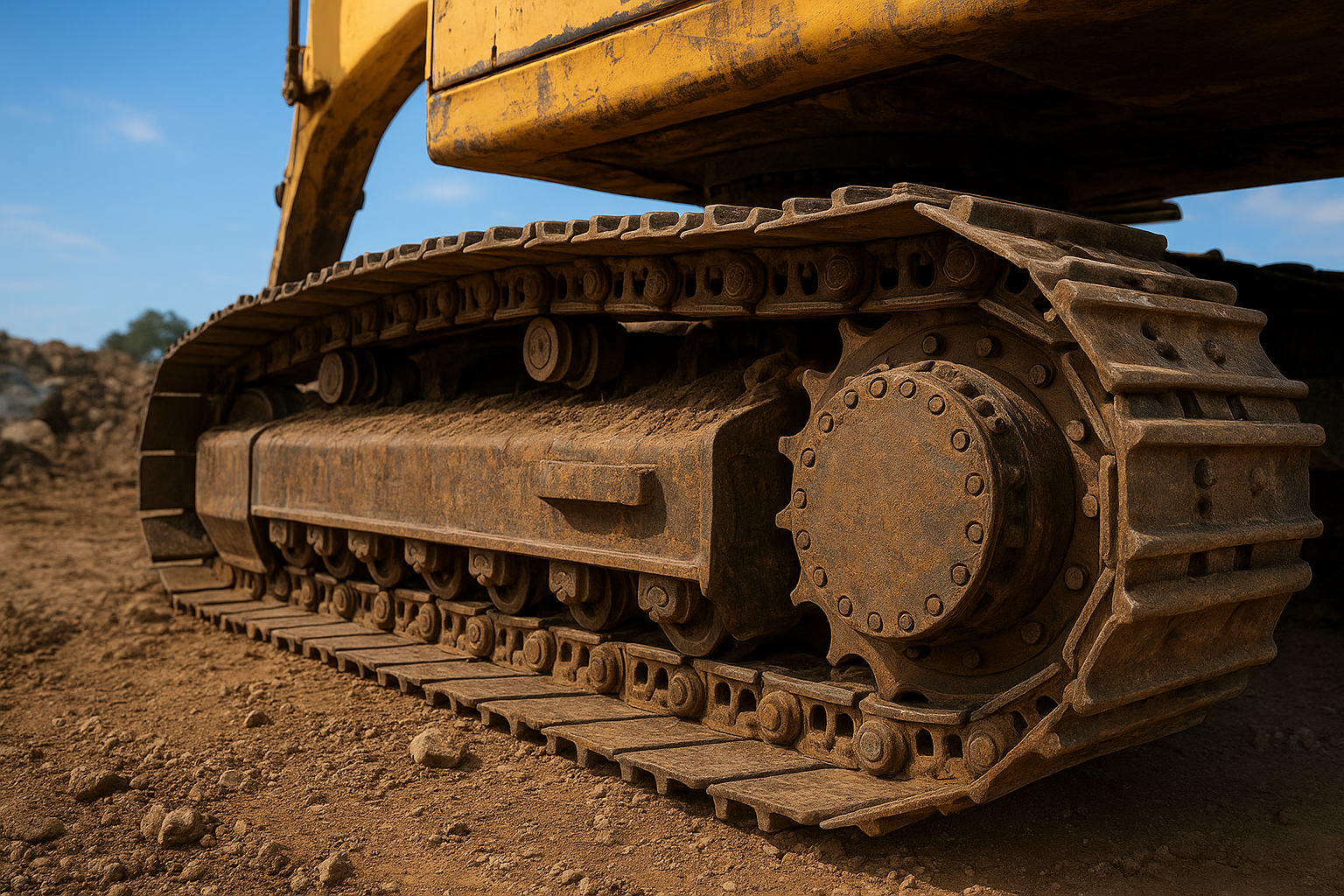Iron Insights
Undercarriage Wear: Why It Matters and How to Spot It
When it comes to tracked heavy equipment like dozers, excavators, and track loaders, the undercarriage is both the machine’s foundation and one of its highest operating costs. In fact, the undercarriage can account for up to 50% of a tracked machine’s total maintenance costs over its lifetime. Keeping an eye on wear not only saves money, but also extends productivity and keeps downtime to a minimum.
Why Undercarriage Wear Matters
The undercarriage is responsible for transferring power from the machine to the ground. Worn or neglected components create ripple effects throughout the system:
- Reduced efficiency – A poorly maintained undercarriage requires more power to move, burning more fuel.
- Excess stress on components – When one part wears unevenly, it accelerates wear on everything else.
- Shortened machine life – Neglecting the undercarriage can lead to costly premature overhauls or even structural damage.
By staying ahead of wear, operators and owners can stretch machine life, improve resale value, and maximize return on investment.
What Wears First in the Undercarriage
Not all components wear at the same rate. Factors like ground conditions, operator technique, and maintenance practices all play a role, but typically these parts show wear first:
- Track Shoes (Pads)
Constant contact with abrasive surfaces like rock, gravel, or hard-packed soil leads to scalloping, bending, or cracking. Worn shoes can affect traction and stability. - Bushings and Pins
These joints allow track chains to move. As they wear, they elongate the track pitch, which leads to loose chains, derailing, or excessive stress on sprockets. - Sprockets
The teeth that drive the chain gradually wear down and “hook” as they mesh with stretched track links. Worn sprockets accelerate chain wear if not replaced in time. - Rollers (Top and Bottom)
Rollers support track weight and keep the chain aligned. Worn or seized rollers cause uneven track wear and poor ride quality. - Idlers and Tensioners
These keep the track chain properly tensioned. A worn idler face or faulty recoil spring makes the entire system less stable, leading to more frequent derailments.
How to Spot Undercarriage Wear
Daily inspections are key. Here’s what to look for during a walk-around:
- Track sag – Excessive sag may mean stretched chains or a failed tensioner.
- Uneven wear patterns – If one side shows more wear, alignment issues could be at play.
- Sharp or pointed sprocket teeth – An indicator that sprockets are past service life.
- Scalloped or cracked shoes – Signs the track pads are wearing down.
- Leaking seals around rollers – Oil loss means rollers will seize and fail prematurely.
For more accuracy, many contractors schedule undercarriage measurements using ultrasonic tools or calipers. This helps predict when components will need replacement, preventing surprise breakdowns.
How Operating Habits Affect Wear
Operator technique can make a huge difference in undercarriage life. A few good practices include:
- Avoid excessive high-speed travel – Heat and friction skyrocket at higher speeds.
- Minimize counter-rotation – Spinning tracks in place wears shoes, sprockets, and rollers quickly.
- Run with proper track tension – Too tight accelerates wear; too loose risks derailment.
- Match the machine to the ground – Wide shoes for soft ground, narrow for hard surfaces.
Undercarriage wear is inevitable, but neglect isn’t. By knowing what to watch for and practicing smart operating habits, owners can double the life of their undercarriage and keep their machines working longer. Every hour saved on downtime is another step toward maximizing productivity and profitability.

